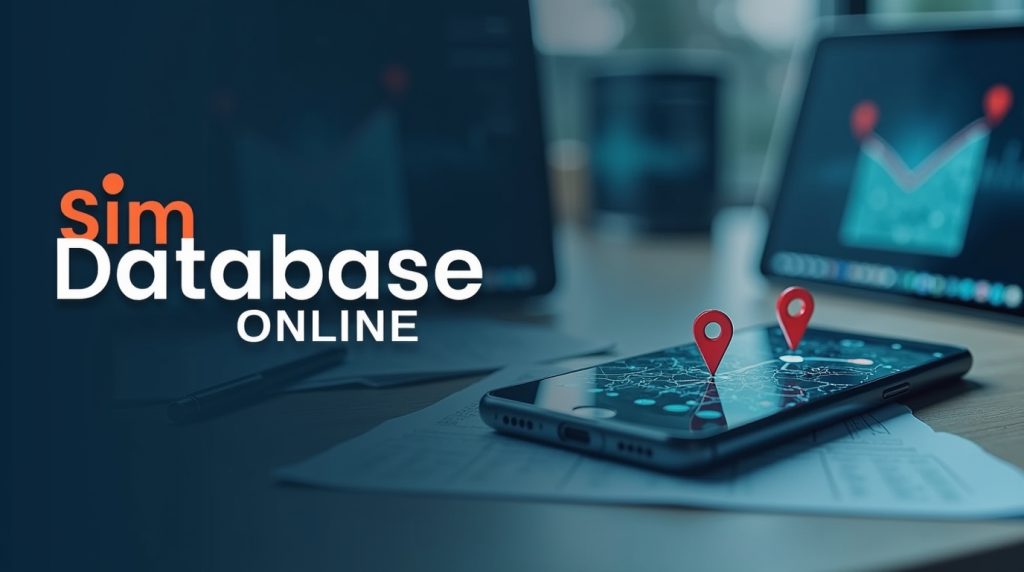Have you ever received a call from an unknown number and wondered who was on the other end? In Pakistan, your SIM card is your digital identity, linked directly to your Computerized National Identity Card (CNIC). This connection has led to the rise of the SIM database, a collection of records that holds owner details. With mobile security and identity theft being major concerns, many people are turning to an online SIM database to trace mobile number details.
But how accurate are these online tools? While platforms like Minahil SIM Database and SimsOwnerDetails.com promise to reveal a SIM owner’s identity, it’s important to understand their limitations. This blog post will explore the accuracy of these databases, compare them to official methods provided by the Pakistan Telecommunication Authority (PTA), and guide you on how to check SIM ownership safely and legally.
Key Takeaways
- In Pakistan, the SIM database links your mobile number to your CNIC, crucial for identity verification.
- Online SIM databases vary in accuracy; unofficial platforms often use outdated data and may compromise privacy.
- For reliable information, always prefer official methods provided by the PTA, which have over 98% accuracy.
- Legal and privacy risks exist with using unofficial SIM databases; misuse can result in legal consequences.
- Regularly check your registered SIMs using PTA’s services to protect against identity theft and fraud.
Table of Contents
What Is a SIM Database?
A Subscriber Identity Module (SIM) card is a small chip that connects your phone to a mobile network, like Jazz, Telenor, Zong, or Ufone. In Pakistan, every SIM must be registered against a valid CNIC. This information, including the owner’s name and CNIC number, is stored in a database SIM information system. Mobile operators maintain this database SIM to comply with regulations and manage their subscribers. An accurate SIM database in Pakistan is crucial for preventing fraud and ensuring that all connections are legally accounted for. This system creates a clear record of who owns which number, a vital part of the national telecom infrastructure.
The Rise of Online SIM Databases
Recently, numerous websites and apps have appeared, offering access to what they claim is a live SIM database. Platforms such as SimsOwnerDetails.com, Minahil SIM data, and various Pak SIM database APK files promise to help you trace mobile numbers for free. They often market themselves as a SIM database online free service, allowing users to look up a SIM owner database by entering a phone number. These tools are popular because they offer a quick way to identify unknown callers or verify a person’s details. Some even claim to have a SIM database 2025 or SIM database 2026 that is continuously updated.

How Accurate Are These Unofficial Databases?
The big question is: can you trust the information from an unofficial online SIM database? The accuracy of these platforms is highly variable. Most of these services scrape data from publicly available sources or older, leaked data sets. This means the information can be outdated or incorrect.
Here are some key statistics and limitations to consider:
- Accuracy for Active Numbers: While some unofficial databases might show 60-80% accuracy for active numbers, this figure drops significantly for older or inactive SIMs.
- Outdated Information: These platforms often lag in updates. A number that was recently sold or transferred may still show the previous owner’s details. The official database SIM information is updated more regularly.
- Pre-2015 SIMs: Numbers issued before the mandatory biometric verification in 2015 are less likely to have accurate records in an unofficial Pakistan SIM database online.
- Data Source Reliability: The information is often unverified. Unlike the PTA, which gets data directly from network operators, these sites rely on less reliable methods, which affects the quality of the database SIM information.
Relying solely on a free online SIM database for important matters can be risky. For instance, a business owner verifying a customer for a cash-on-delivery order might send the product to the wrong person if the database SIM owner information is incorrect.
Comparing Official vs. Unofficial Databases
For reliable SIM verification, the official methods provided by the PTA are always the best choice. They are secure, accurate, and legal. Let’s compare them to the unofficial online tools.
| Feature | Official PTA Method (Website/SMS) | Unofficial Online SIM Database |
|---|---|---|
| Accuracy Rate | 98%+ | 60-80% (Variable) |
| Information Source | Directly from mobile network operators | Scraped data, old records, public sources |
| Update Frequency | Real-time or within 24-72 hours | Irregular, often outdated |
| Information Provided | Number of SIMs per CNIC, network name | Owner’s name, CNIC, address (often inaccurate) |
| Cost | Free | Usually free (but with privacy risks) |
| Legality | 100% legal and recommended by authorities | Legally gray area, potential privacy violations |
| Reliability Score | Very High | Low to Medium |
As the table shows, the official PTA methods are far more trustworthy. An unofficial live tracker SIM database might offer more details, but the accuracy is questionable.
How to Use Official PTA Methods
There are two simple and secure ways to check SIM ownership officially:
- PTA Website:
- Visit the official PTA portal: cnic.sims.pk.
- Enter your 13-digit CNIC number without any dashes.
- Complete the reCAPTCHA verification.
- The system will show you the total number of voice and data SIMs registered to your CNIC across all networks (Jazz, Telenor, Zong, Ufone).
- SMS Service:
- Open the messaging app on your phone.
- Send your 13-digit CNIC number (without dashes) to 668.
- You will receive an SMS reply detailing the number of SIMs registered on your CNIC for each network.
These methods are the most reliable ways to perform a SIM database check and ensure no fraudulent numbers are linked to your identity.

Legal and Privacy Considerations about the SIM Database
Using an online SIM database comes with significant legal and privacy risks. Accessing someone’s personal information without their consent is a violation of privacy. In Pakistan, the Prevention of Electronic Crimes Act (PECA) governs data privacy, and misusing personal data can lead to legal consequences.
When you use an unofficial SIM database tracker or a Pakdata SIM database, you are often sharing the number you are searching for with a third-party service. These platforms might collect this data for their own purposes. Furthermore, relying on an inaccurate database to obtain SIM owner details for any official or legal matter is not advisable. Always use official channels to avoid legal trouble and protect personal data.
Tips for Verifying SIM Ownership Securely
Protecting your digital identity is more important than ever. Here are some practical steps you can take:
- Regularly Check Your CNIC: Use the PTA’s 668 SMS service or the cnic.sims.pk website every few months to check for any unauthorized SIMs registered in your name.
- Block Unauthorized SIMs Immediately: If you find a number you don’t recognize, visit the nearest franchise of the respective mobile operator with your original CNIC and request to have it blocked.
- Be Cautious with Third-Party Apps: Avoid using unofficial tools like Pak Sim Ga, live tracker sim database online, or any SIM database toolkit APK. These apps can compromise your privacy.
- Never Share Your CNIC: Do not share your CNIC number or personal details on untrusted websites. Phishing sites often disguise themselves as a free SIM database online to steal information.
- Cross-Reference Information: If you must use an online tool, cross-reference the results from at least 2-3 different sources. However, always confirm with the official PTA method.
Your Best Defense Is Proactive Verification
While the idea of a live SIM database that can instantly trace any mobile number is appealing, the reality is that unofficial online platforms are often unreliable and pose privacy risks. The information in a publicly accessible SIM database in Pakistan can be outdated, leading to incorrect conclusions and potential misuse of personal data.
For accurate and secure verification, always rely on the official methods provided by the PTA. By regularly checking the SIMs registered to your CNIC, you can protect yourself from identity theft and fraud. Take control of your digital identity today by using the trusted, legal channels available to every Pakistani citizen. Your peace of mind is worth the effort.
FAQs
While some unofficial online SIM databases claim to offer this, the information is often inaccurate, and using them can be a privacy violation. The most reliable way is through official channels, which are restricted for public use to protect privacy.
No, it is generally not safe. These apps are not endorsed by the PTA and may contain malware, misuse your personal data, or provide incorrect information. Always stick to official methods like the 668 SMS service or the cnic.sims.pk website.
It is a good practice to check the number of SIMs registered on your CNIC at least once every few months or whenever you suspect any unusual activity. This helps you quickly identify and block any unauthorized numbers.
This is a common issue with unofficial databases, as they rarely update their records. Official records are tied to your CNIC and don’t publicly display address information, so this is not a concern when using PTA’s services.
If your SIM is lost or stolen, you should immediately call your mobile network’s helpline from another number and request to block the SIM be blocked. You will need to verify your identity by providing your name and CNIC number.











